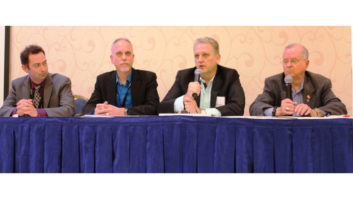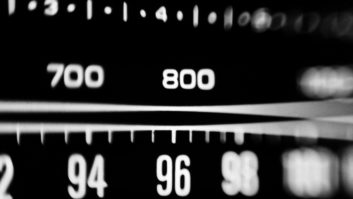The National Alliance of State Broadcasters Association (NASBA) is reporting insights it discovered after polling AM stations about the removal of over-the-air AM in new cars.
The data collected from more than 1,000 AM stations shows that many do not have an FM translator and/or do not stream their signals over internet connections, NASBA says. The group is hoping to use the information to rally proponents of AM to help convince companies like Ford, Mazda, BMW and others to keep reception of AM in their new vehicles.
NASBA says the automakers “are cutting corners on expensive new electric vehicles” by eliminating AM radios, which means more than 4,000 AM stations in the United States are at risk. But its survey results show that AM radio across the country provides a diverse mix of music and talk and is a vital link for millions of listeners.
“The goal of our station survey was three-fold. First, we wanted to confirm AM radio’s diverse landscape of formats, languages and ownership. Second, we wanted to quantify AM radio’s crucial part in the nation’s Emergency Alert System. And third, we wanted feedback that will guide our state association response going forward,” said Dewey Bruce, president of the National Alliance of State Broadcasters Associations and the Montana Broadcasters Association.
Automakers contend AM radio programming is often available through other means in the car, such as FM translators, streaming apps and HD Radio side channels.
But while upwards of 70% of responding stations have FM translators, NASBA says hundreds of stations are without a home on FM. “Extrapolating that percentage to the 4,475 licensed AM stations in the United States means that 1,300 AM stations could be left in the dark,” NASBA wrote in the report.
Of the roughly 725 stations that indicated they did have an FM translator, less than 20% have an FM signal coverage area that is equal to or greater than its AM counterpart, according to NASBA.
Additionally, the survey found that more than half of AM stations do not currently have a standalone mobile app and 40% are not currently found on radio aggregators. “For many AM operators working diligently to keep their over-the-air signal on the air, providing the local news, music, entertainment and emergency information that their communities rely upon, the expense of streaming their station and paying additional royalties is simply not realistic.”
Forty percent of station respondents air music formats ranging from classic country and oldies to Spanish Regional Mexican and inspirational gospel, according to NASBA’s Dashboard Subcommittee, so the notion that only talk-radio thrives on AM radio is incorrect.
The potential loss of AM in autos has motivated the radio industry to go on the offensive — emphasizing the value of AM radio content and its critical role in emergency alerting. A grand total 99% of respondents to NASBA’s survey say they participate in the Emergency Alert System. In addition, most Primary Entry Point (PEP) stations are AM stations, which constitute 90% of coverage of the U.S. population, according to FEMA statistics.
The most telling survey result, according to NASBA, is that 8 in 10 of the radio stations responding listed their level of concern as 10 out of 10 when it comes to AM being eliminated in the car.
Eight automakers have decided to drop AM radio from some of their models, mostly EVs, and have cited interference with AM radio reception caused by electric motors as the reason.












